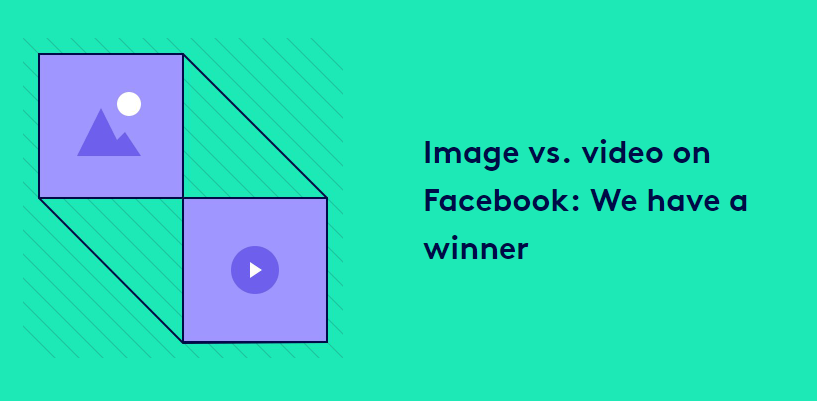Video is the hot marketing topic on everyone’s lips right now. It’s affordable, memorable, and it works. Social media is the perfect place to get creative with video, and Facebook, in particular, makes it easy to set up and deliver videos and ads that work hard for your business.
In this article, we’ll explain how to drive prospects from cold to warm in three videos using the Facebook funnel and sequential video campaigns.
We’ll also share some data with you from a recent experiment we ran. It shows why you should use video (instead of images) in your Facebook campaigns. More on that soon. First up, let’s look at how the video became so important on Facebook.
The power of video
Video consistently generates more ROI than still images, and the statistics are impressive:
- Facebook videos get an average of 135% more organic reach than images
- 500 million people watch Facebook videos daily
- Every day, over 100 million hours of video is viewed on Facebook
- Video marketing gets 66% more qualified leads every year

Facebook’s main goal is to get people to spend more time on their platform, and video is one of the key ways they found to make this happen. Research done around 2013 revealed that people on the internet were watching and engaging with video more than any other type of content. This was a lightbulb moment and Facebook began to optimize their platform for video.
The timeline was restructured for video, and autoplay (everyone’s favorite…) was added so that videos appeared in the newsfeed as dynamic posts.
About this time, Facebook also discovered that people engaged more with video ads than those with static creatives. As they were experiencing a decline in advertising, it was a natural progression for them to refresh their advertising schemes with video – boosting platform engagement and ad revenue at the same time.
Features like Live and Stories were added, along with fresh ad formats perfect for video marketing. This enabled both personal users and advertisers to leverage video for greater exposure to their audiences.
The mysterious algorithms are also changing behind the scenes. Facebook is working hard on its goals to encourage active engagement with video content, so any videos posted get maximum love from the algorithm. Simply post more videos, and you’ll be Facebook’s friend.
Using video in your marketing
Video tends to have different objectives than images, so this is something to take into consideration when you’re planning ads for your funnel.
If you’re focused on getting clicks, conversions, and sales, then video will outperform images every time. Striking moving images, sound, and text let you promote your brand clearly and provide an opportunity for storytelling so you can connect with your viewers. Forming that connection gives you the opportunity to build trust and interest, which helps those sales happen faster.
Our experiment: video vs. static image
We love testing at Biteable, so it was a no-brainer to set up an experiment and let video go head-to-head with the traditional static images that have reigned supreme for so long. We knew that video nearly always wins against images on Facebook – we just needed to prove it once and for all.
For our experiment, we created a static ad and a video ad. Using visually similar images, a similar CTA, and a clear message, we set up our ads with lead capture as the objective. Both ads were served to the same audience, with the same budget, and the same production time (5 minutes in the Biteable app).
The results
Let’s just say nobody was surprised by the outcome. Though we were surprised by how much better video performed.
Our video sprinted to victory on reach, clicks, and ROI with impressive metrics:
- 25% more reach
- 480% more clicks
- 497% cheaper per click
- 270% more leads
- 280% less cost per lead
Sorry images, but you’re just not that cool anymore. If you want more punch for your marketing dollars the people have spoken, and it’s video all the way. For the full results, dive into our Facebook Marketing Handbook.

The Facebook funnel
Now that those impressive results are on your mind, you’ll be wanting to try video for yourself, but first, you need to think about your ad goals. The best way to do this is by thinking about how Facebook’s funnel works. Thankfully, it’s much the same as the traditional marketing funnel. Each part of the funnel has a different objective, and your ads need to reflect this to perform at their peak.
Like any sales funnel, it’s not all about going straight for the sale. Your ads should follow a logical progression from creating awareness, moving to consideration of what makes your brand special, and ending with conversion.
Facebook’s various campaign types (and matching objectives) allow you to introduce your brand, build trust in your audience, and drive prospects towards buying. As you’re taking these steps, the algorithm is also learning who your perfect audience is so it can hyper-target them.
Building sequential campaigns is the perfect way to let the algorithm do what it does best. A gap of a week or so between each campaign will let you build better ads based on the data collected from previous campaigns. It’s important that you match your objectives with the right campaign types to get people moving along your funnel.
Awareness campaigns
As the first step in your funnel, these ads need to capture the attention of people who don’t know you, but are likely to be prospects. These ads should be bright, thumb-stopping, eye-catching, and make a good first impression. This gives viewers an instant feel for your brand.
The goal for these campaigns is to grab attention within the first three seconds. Your focus should be on building trust in your new audience, so no hard calls to action are needed in these ads.
Important metrics for these campaigns are impressions and video completions. Low impressions will mean your audience targeting is off. Similarly, low video completion rates mean your initial few seconds isn’t catchy or the content itself isn’t interesting enough for people to watch to the end.
Pay special attention to the images and messaging in this part of the funnel, as grabbing and keeping your viewers’ attention is critical to get them to move further along your ad sequence.
Main objectives for targeting: Video views and post engagement
Consideration campaigns
After you’ve got the attention of your audience from the previous campaign, you’ll need to take the trust building a little further with a follow-up ad. People that see your consideration-stage ads will now have some sort of interest in your brand and services.
Comparison videos, demonstrations, and feature highlights are all popular choices for mid-funnel campaigns. Your goal is to give your audience some insight into your unique value proposition and how that sets you apart from your competition.
While consideration ads can have links out to your website or landing page, the goal here is still to educate people about your brand. Soft calls to action are appropriate, as most people will still not be ready to buy from you at this stage. Ads should be kept relatively short to incentivize people to make the click and find out more about your offer on your landing page or website.
Main objectives for targeting: landing page views, traffic (e.g. to your blog), and lead form generation.
Conversion campaigns
These are effectively your remarketing ads, and this is where you give it your best shot at driving your audience into a buying frenzy.
At the conversion campaign stage, you can present key benefits, case studies, and social proof to coach the clicks to your sales or sign-up pages. The people that see these ads are exclusively those who have already been exposed to your consideration ads. They will have been to your landing page or blog already to have a look around. These are your hot prospects who just need a little more convincing to become a customer.
Main objective for targeting: conversion.
What happens after the funnel?
After visitors have successfully moved through your funnel and converted, they shouldn’t be forgotten. These are the customers you need to nurture, as they’re likely to buy from you again. It’s also more cost-effective to retain them than constantly seek new buyers.
Below the funnel is a golden opportunity to build some serious brand loyalty with campaigns for special promotions, upsells, and repeat purchases. By tracking your data, you can pinpoint the people who engage with your business the most. These are your promoters who are happy to share and refer other buyers to you, making them the ideal advocates for your brand.
Retargeting and remarketing to this segment of your audience is one of the most effective and budget-friendly ways to grow your business.
Whichever level of the funnel you’re targeting, be sure to use video. It’s a powerful and affordable tool to help you get more reach and more mileage out of your budget.
To learn everything you need to know about using video on Facebook, dive into our complete guide on the subject: The Facebook Video Marketing Handbook.